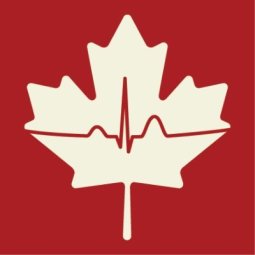Mitchell JM. Effect of Physician Ownership of Specialty Hospitals and Ambulatory Surgery Centers on Frequency of Use of Outpatient Orthopedic Surgery Arch Surg. 2010;145(8):732-738.
Background
The U.S. insurance industry has promoted outpatient and brief-stay procedures to avoid costly general hospital admissions. Canadian practice has followed suit. In the United States, and to a much lesser extent in Canada, surgeons have established physician-investor-owned free-standing ambulatory centres for interventions such as arthroscopy, hernia repair, and other less invasive procedures. In regions of the United States with minimal regulation of hospital construction, these centres have proliferated. Given that physicians who own such centres have an interest in generating revenue by referring their own patients for outpatient procedures, this study investigated whether physician-owners are more likely to influence the frequency of outpatient orthopaedic surgery than physician non-owners.
Methods and limitations
This study examined practice patterns among orthopaedic surgeons in Idaho, a state with a large increase in physician-owned ambulatory surgery centres (ASCs) during the last 20 years. The author determined which surgeons were owners and which were not, and then calculated the proportion of patients in each practice with relevant diagnoses who were referred for carpal tunnel repair, rotator cuff repair, and arthroscopic surgery of the knee during the interval 2003-2007 inclusive. Odds ratio was calculated for surgical intervention among patients of owners vs. non-owners. The findings represent practice patterns in only one U.S. state, thus generalizability may be limited.
Findings and Analysis
Physician-owners were more likely to refer their own patients for surgical interventions than non-owners during most years for most procedures. For instance, in 2003-2005, physician-owners were no more likely to refer their patients for rotator cuff repair than non-owners, but in 2006 and 2007, owners were significantly more likely to do so. For carpal tunnel repair and arthroscopic surgery of the knee, owners were significantly more likely to perform surgery each year during 2004-2007. For carpal tunnel repair, the age- and sex-adjusted probability of having surgery was 54% to 129% higher for patients of surgeon-owners compared with non-owners. For rotator cuff repair, the adjusted odds ratios of having surgery were 33% to 100% higher for patients treated by physician owners. For arthroscopic surgery, the adjusted probability of having surgery was 27% to 78% higher for patients of surgeon owners compared with surgeon non-owners.
Establishment of a physician-owned speciality hospital is typically associated with an increase in procedures. This study does not examine whether the higher frequency of surgery in physician-owned facilities has a marginal benefit to patients. The author concludes that if even some of the “increased frequency of surgery by physician owners is performed in marginal cases, then a share of the greater expenditures associated with self-referral represents inefficient spending”.
The author considers explanations other than self-interest in the patterns of operative practice. For instance, could the patients of owners and non-owners differ in severity of illness or preference for type of treatment? This seems unlikely. The author acknowledges that the study cannot say whether the patients of physician-owners have better or worse outcomes. Nonetheless, there appears to be a bias toward operative intervention among owners, and one wonders if the patients of ASC owners are receiving a fair explanation of the risks and benefits of both operative and non-operative treatments.
Comment
Relatively few physician-owned treatment centres exist in Canada. The practice patterns of those that do are difficult to discern because of limited oversight and public accountability from provincial authority.
In July 2012, the Medical Services Commission of BC found evidence that the profit-driven physician- and investor-owned Cambie Surgery Centre in Vancouver illegally charged patients illegally, likely for many years, with almost half a million dollars in extra billing during a 30-day period. A profit-maximizing motive presents a conflict of interest between referring physicians investors and the patients they serve, suggesting that physician practice patterns are influenced by financial incentives. This study also raises questions about the quality and cost-effectiveness of care in physician-owned ASCs.
This study, alone, does not confirm that surgeons who own an ASC refer their own patients for procedures to maximize revenue. Combined with findings from other research, however, this conclusion is not unreasonable. In the United States, such hospitals are less likely to provide emergency care or to treat poorly insured or under-insured patients. We have no evidence on whether this is also true in Canada because data from privately-owned for-profit medical/surgical facilities are not subject to public scrutiny.
